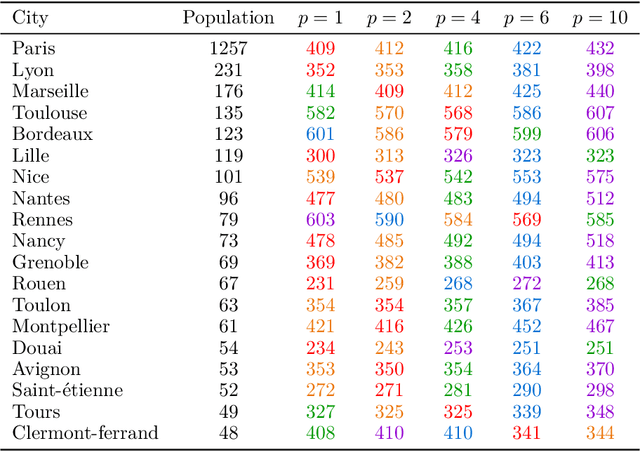Zixu He
Fair Railway Network Design
Sep 03, 2024



Abstract:When designing a public transportation network in a country, one may want to minimise the sum of travel duration of all inhabitants. This corresponds to a purely utilitarian view and does not involve any fairness consideration, as the resulting network will typically benefit the capital city and/or large central cities while leaving some peripheral cities behind. On the other hand, a more egalitarian view will allow some people to travel between peripheral cities without having to go through a central city. We define a model, propose algorithms for computing solution networks, and report on experiments based on real data.
COEFF-KANs: A Paradigm to Address the Electrolyte Field with KANs
Jul 24, 2024Abstract:To reduce the experimental validation workload for chemical researchers and accelerate the design and optimization of high-energy-density lithium metal batteries, we aim to leverage models to automatically predict Coulombic Efficiency (CE) based on the composition of liquid electrolytes. There are mainly two representative paradigms in existing methods: machine learning and deep learning. However, the former requires intelligent input feature selection and reliable computational methods, leading to error propagation from feature estimation to model prediction, while the latter (e.g. MultiModal-MoLFormer) faces challenges of poor predictive performance and overfitting due to limited diversity in augmented data. To tackle these issues, we propose a novel method COEFF (COlumbic EFficiency prediction via Fine-tuned models), which consists of two stages: pre-training a chemical general model and fine-tuning on downstream domain data. Firstly, we adopt the publicly available MoLFormer model to obtain feature vectors for each solvent and salt in the electrolyte. Then, we perform a weighted average of embeddings for each token across all molecules, with weights determined by the respective electrolyte component ratios. Finally, we input the obtained electrolyte features into a Multi-layer Perceptron or Kolmogorov-Arnold Network to predict CE. Experimental results on a real-world dataset demonstrate that our method achieves SOTA for predicting CE compared to all baselines. Data and code used in this work will be made publicly available after the paper is published.
 Add to Chrome
Add to Chrome Add to Firefox
Add to Firefox Add to Edge
Add to Edge